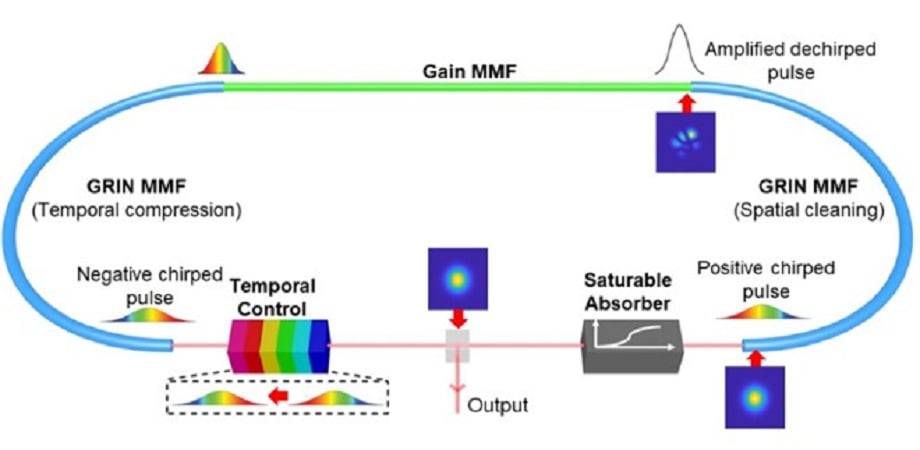Researchers from École Polytechnique Fédérale de Lausanne (EPFL) have developed a method of nonlinear beam cleaning in a multimode laser cavity. The technique establishes a new approach for the generation of high-energy ultrashort pulses with single-mode beam quality.
As a result, the work enables fiber lasers to offer the same power levels as solid-state lasers without requiring cascaded amplifiers, Ugur Tegin told Photonics Media. Tegin is lead author of the study describing the advance.
Due to the small core size of the single-mode fibers, mode-locked fiber lasers suffer from high nonlinearity, affecting their power levels. Mode-locked single-mode fibers are attractive due to certain advantages in high-gain doping, intrinsically single-spatial modem and compact setups.

Conceptual outline of dispersion-managed cavity design. Courtesy of Tegin et al.
Traditionally, to overcome the power-level problem, low-power ultrashort pulses are generated, followed by a cascade of amplifiers to increase power levels. That makes the devices more complicated and more expensive, however.
According to the researchers, their approach is the first of its kind and demonstrates the generation of sub-100-femtosecond pulses with high pulse energy (more than 20 nJ) and beam quality of M2 value (less than 1.12 without external amplification) in a compact and low-cost form.
The method additionally uses commercially available components, Tegin said.
The team investigated the complex cavity dynamics with mode-resolved simulations to numerically and experimentally confirm nonlinear beam cleaning. The method can be extended to fibers with a larger core size while maintaining beam quality of sub-100-fs pulses.
“We believe with our technique fiber lasers can exhibit their advantages more clearly,” Tegin said.
The research was published in Advanced Photonics (www.doi.org/10.1117/1.AP.2.5.056005).